Are FSC balloons truly sustainable?
Have you ever wondered if the balloons celebrating your special moments are truly eco-friendly? Many of us want to make responsible choices. I know I do.
FSC-certified latex balloons1 are widely considered sustainable because their raw material, natural rubber2, is sourced from responsibly managed forests, ensuring that production does not contribute to deforestation and supports biodiversity. These balloons are also biodegradable3.
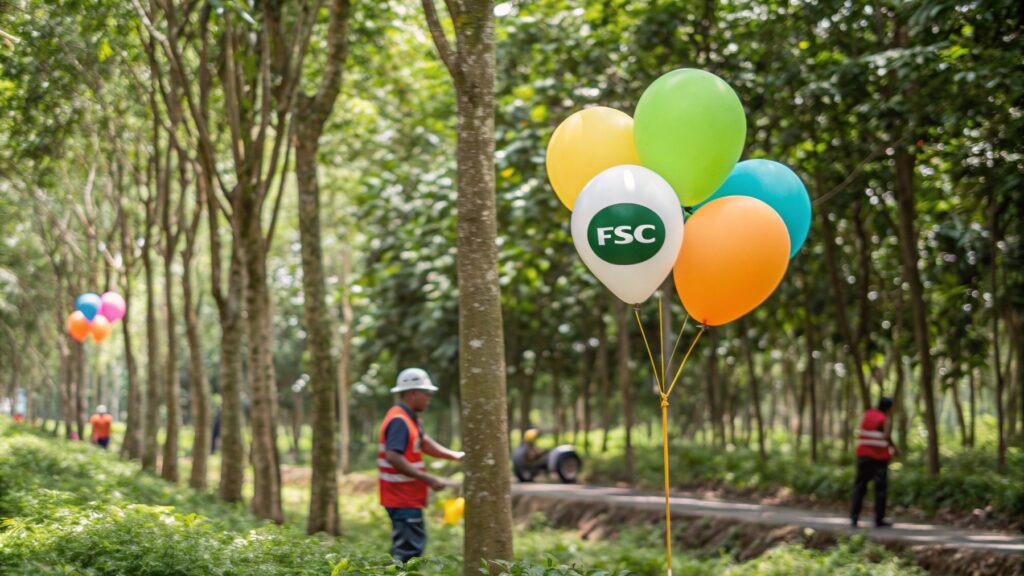
Let's explore what makes FSC-certified balloons a sustainable choice, and what challenges they still face in their lifecycle.
How do FSC-certified balloons impact deforestation rates?
Are you concerned about the environmental impact of your party decorations? Deforestation is a major global issue.
FSC certification ensures that the latex used in balloons comes from responsibly managed rubber tree plantations4, which helps to prevent deforestation by promoting sustainable forestry practices5 and protecting natural ecosystems.
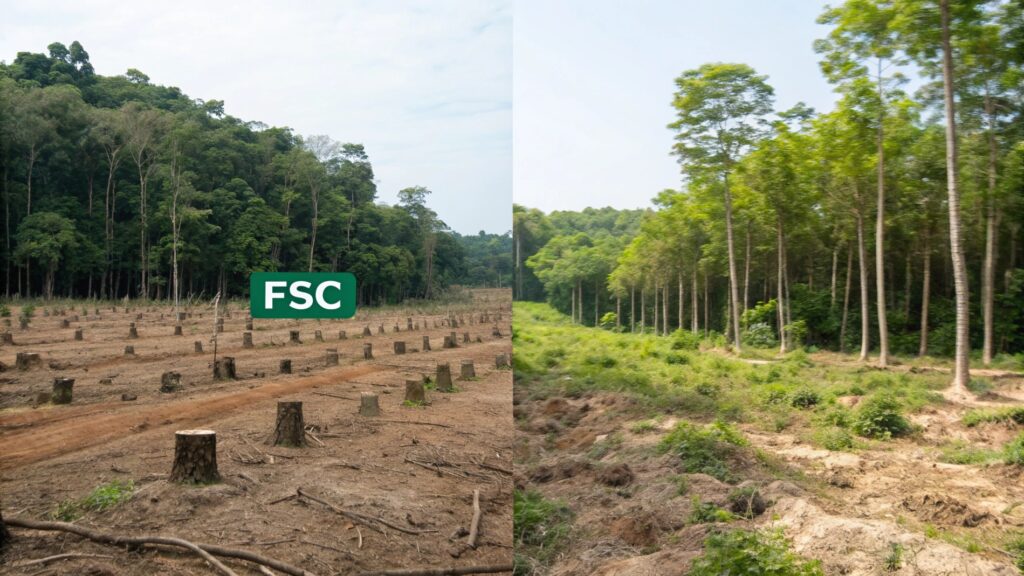
My journey in the balloon industry has taught me that the source of raw materials is everything. When we talk about FSC-certified latex balloons, we are talking about natural rubber. This natural rubber comes from rubber trees. These trees are grown on plantations. FSC certification means these plantations are managed in a way that respects the environment. It means that forests are not cut down to plant new rubber trees. Instead, existing land is used sustainably. It also means that biodiversity is protected. Workers' rights are also respected. This certification provides a clear chain of custody. It traces the rubber from the forest to the final balloon product. This transparency helps to fight illegal logging. It also prevents the conversion of natural forests into plantations. FSC standards require replanting and responsible land use. This helps to maintain forest cover and carbon sequestration. This is a big step towards preventing deforestation6. It helps ensure that our fun does not come at the cost of our planet's lungs.
| Aspect of Impact | FSC-Certified Rubber Plantation | Non-Certified Rubber Plantation |
|---|---|---|
| Deforestation Risk | Low (managed planting) | High (potential clear-cutting) |
| Biodiversity Protection | High (conservation efforts) | Low (habitat destruction) |
| Soil Health | Maintained (sustainable practices) | Degraded (intensive farming) |
| Water Quality | Protected (reduced runoff) | Polluted (chemical use) |
| Carbon Sequestration | Enhanced (reforestation) | Reduced (forest loss) |
| Community Benefits | High (fair labor, local support) | Low (exploitation risk) |
What are the end-of-life disposal challenges for FSC-approved balloons?
Do you ever wonder what happens to balloons after the party ends? Proper disposal is a real concern.
While FSC-approved balloons, made from natural latex, are biodegradable, their degradation rate depends heavily on environmental conditions and proper disposal methods, meaning they do not disappear instantly.
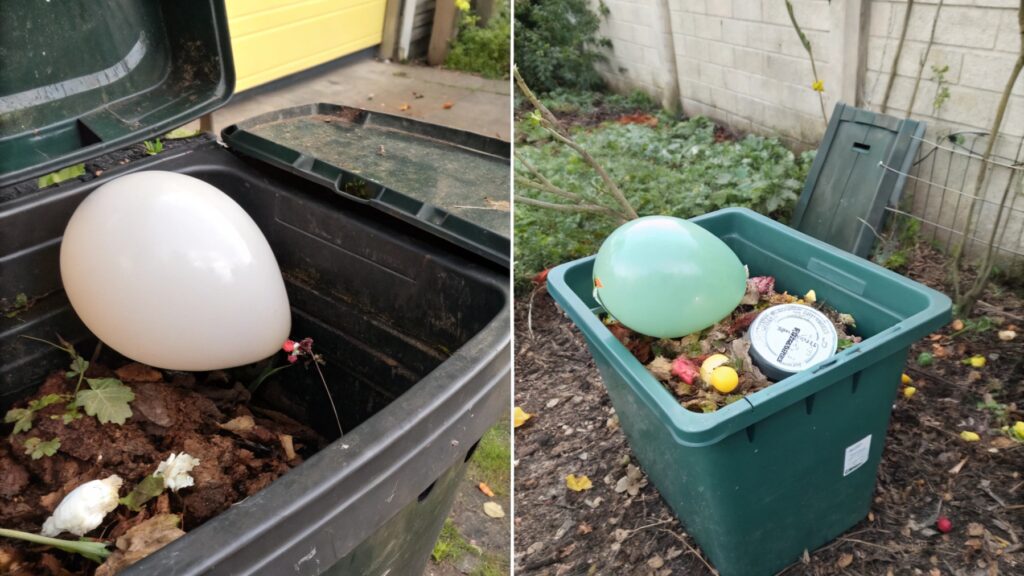
When I first learned about balloon materials, I realized that "biodegradable" does not mean "disappearing overnight." Natural latex balloons are biodegradable. This is a fact. They break down over time. This process is like a leaf breaking down in nature. But this process needs specific conditions. It needs exposure to light, air, and microorganisms. In a landfill, these conditions are often not met. Landfills are usually low in oxygen and light. This slows down degradation significantly. This means that even biodegradable items can persist for a long time in a landfill. This is a challenge. It means that simply throwing a balloon in the trash is not the best solution. We need to encourage proper disposal. This includes composting7 where facilities exist. It also means reducing litter. Releasing balloons into the air is also harmful. It can harm wildlife. It can also pollute ecosystems. So, even with biodegradable materials, responsible disposal is key.
| Disposal Method | Degradation Rate | Environmental Impact | Considerations |
|---|---|---|---|
| Composting (Industrial) | Fast | Low | Requires specific facilities, not widely available |
| Composting (Home) | Moderate | Low | Slower than industrial, requires proper setup |
| Landfill | Very Slow | Moderate | Limited oxygen and light inhibit breakdown |
| Litter/Open Environment | Moderate-Slow | High | Harms wildlife, pollutes ecosystems |
| Incineration | Immediate | Moderate-High | Releases greenhouse gases, air pollution |
Do FSC balloon manufacturing processes contribute to greenhouse gas emissions8?
Are you thinking about the overall carbon footprint of your party supplies? Manufacturing processes can have an impact.
The manufacturing of FSC-certified latex balloons involves energy consumption for processing and transportation, leading to some greenhouse gas emissions, though these are typically lower than synthetic alternatives due to natural material sourcing.
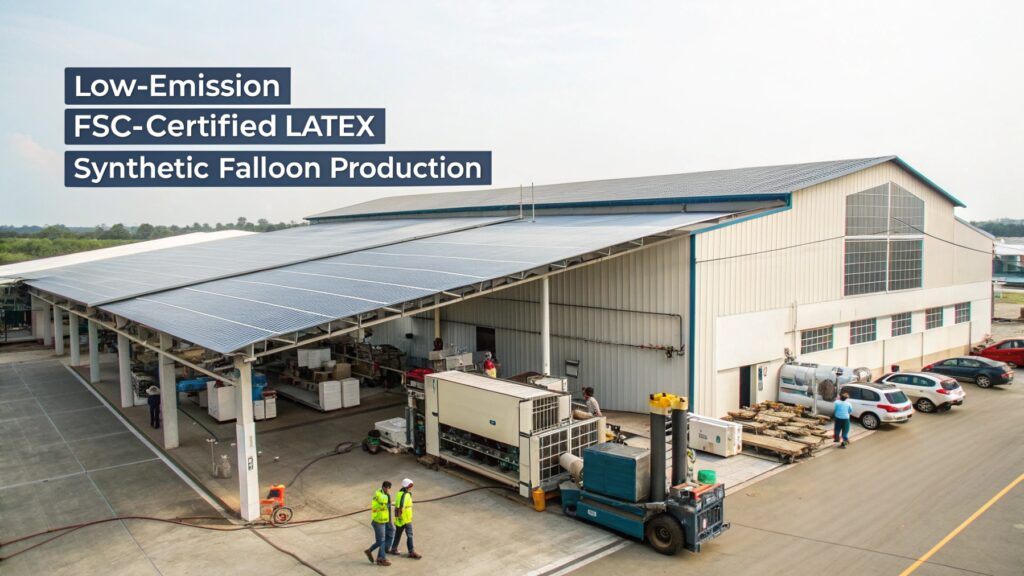
From my experience on the factory floor, I know that making anything uses energy. Even for FSC-certified latex balloons, there is an energy cost. The natural rubber sap is harvested. It is then processed. This processing includes washing, drying, and molding. Each step uses electricity or other energy sources. These energy sources might come from fossil fuels. This leads to greenhouse gas emissions. Transportation also contributes. The raw latex needs to be transported from plantations. Then the finished balloons need to be shipped to consumers worldwide. This global supply chain means more fuel consumption. But it is important to compare this to synthetic balloons9. Synthetic balloons are made from petroleum-based plastics. Their production often has a much higher carbon footprint. This is because they rely on non-renewable resources. The energy input for their production is usually greater. So, while FSC balloons are not carbon-neutral, their impact is generally lower. This is due to their natural origin and the sustainable practices involved in sourcing. We strive to use efficient manufacturing processes. We also look for ways to reduce our energy consumption. This helps to minimize our environmental footprint.
| Stage of Manufacturing | Potential GHG Contribution | Mitigation Strategies |
|---|---|---|
| Rubber Tapping | Minimal | Efficient collection, local processing |
| Latex Processing | Moderate (drying, coagulation) | Use renewable energy, improve energy efficiency |
| Balloon Molding | Moderate (heating, cooling) | Optimize machine usage, recover heat |
| Drying & Curing | Moderate | Energy-efficient drying, heat recovery |
| Packaging | Low | Use recycled materials, minimize packaging |
| Transportation (Raw Material) | Moderate | Optimize shipping routes, use efficient transport |
| Transportation (Finished Product) | Moderate | Localized production, bulk shipping, efficient logistics |
Are there truly biodegradable alternatives10 to FSC balloons available on the market?
Are you looking for even more sustainable options for your celebrations? Many people are curious about alternatives.
While FSC-certified natural latex balloons are inherently biodegradable, other "biodegradable" alternatives, especially those made from plant-based plastics, often require specific industrial composting conditions to fully break down, and some are not truly biodegradable in natural environments.
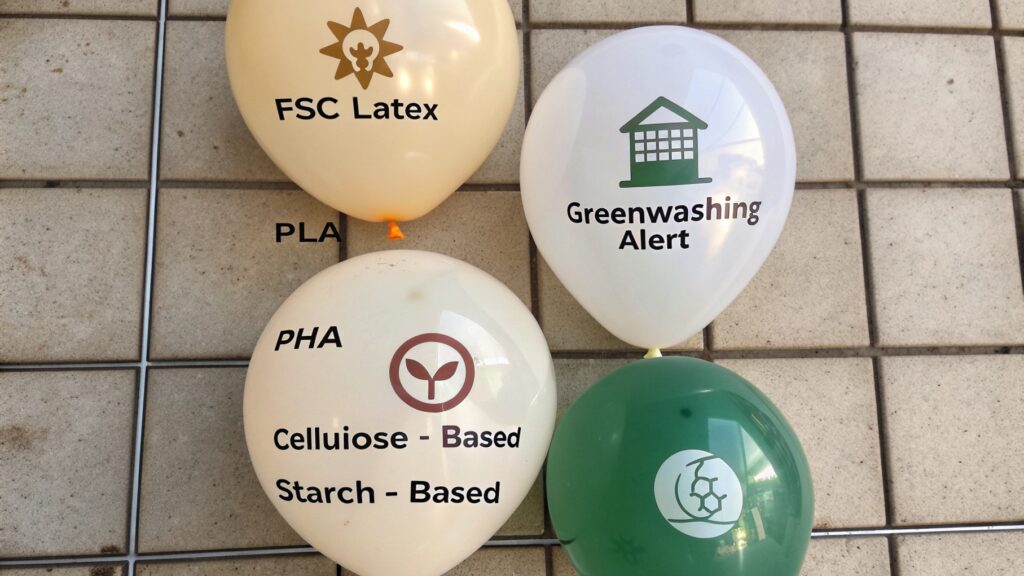
In my years in this industry, I have seen many claims about "biodegradable" products. It is important to understand what this truly means. FSC-certified latex balloons are made from natural rubber. This material comes from trees. It is a natural polymer. It breaks down in nature. This is a key point. Other "biodegradable" balloons might be on the market. Some are made from bioplastics. These bioplastics can be derived from corn starch or other plant materials. While they sound good, their biodegradability varies greatly. Many bioplastics need very specific conditions to break down. They need industrial composting facilities. These facilities are not common everywhere. Without these conditions, these bioplastics can act just like regular plastic in landfills or natural environments. They might break into microplastics. This does not solve the pollution problem. So, while there are alternatives, it is crucial to read labels carefully. Understand the exact conditions required for their degradation. For general use, natural latex, especially FSC-certified, remains a strong contender. This is because it degrades more readily in varied natural conditions. It is not as dependent on specialized waste management systems.
| Alternative Material | Biodegradability | Requires Specific Conditions | Common Misconceptions |
|---|---|---|---|
| FSC-Certified Natural Latex | High | No (degrades in nature) | Thought to be plastic, not truly eco-friendly |
| PLA (Polylactic Acid) | Moderate | Yes (industrial composting) | Often marketed as "compostable" without context |
| PHA (Polyhydroxyalkanoates) | High | Yes (some natural conditions) | Can be expensive, less common |
| Cellulose-based Polymers | High | No (degrades in nature) | Can be less durable than latex |
| Starch-based Plastics | Moderate | Yes (some industrial composting) | Can be water-soluble, less durable |
Conclusion
FSC-certified latex balloons offer a sustainable choice. Their sourcing prevents deforestation. Their natural material also means they are biodegradable. This makes them a responsible option for celebrations.
-
Explore this link to understand how FSC-certified latex balloons contribute to sustainability and eco-friendliness in celebrations. ↩
-
Discover the sustainable sourcing of natural rubber and its impact on the environment and biodiversity. ↩
-
Learn about the significance of biodegradable materials and their role in reducing waste and protecting our planet. ↩
-
Learn about the benefits of responsibly managed plantations for the environment and sustainability. ↩
-
Explore sustainable forestry practices to see how they contribute to environmental conservation and responsible sourcing. ↩
-
Understanding the effects of deforestation is crucial for making eco-friendly choices and supporting sustainable practices. ↩
-
Exploring composting methods can provide insights into effective waste management and reducing environmental impact. ↩
-
Learning about greenhouse gas emissions in manufacturing can help you choose more sustainable products and practices. ↩
-
Learn about the environmental impact of synthetic balloons and why they may have a higher carbon footprint than natural alternatives. ↩
-
Discover the truth about biodegradable balloon alternatives and their environmental implications for your celebrations. ↩
